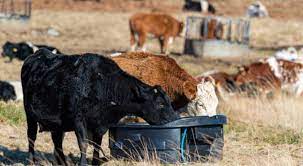- Tweet
- Printer Friendly
Understanding the Cost and Coverage of Livestock Risk Protection Insurance (LRP)
Dr. Andrew Griffith, Assistant Professor, Livestock Marketing Specialist, Department of Agricultural and Resource Economics, University of Tennessee
 A couple of questions concerning Livestock Risk Protection insurance (LRP) were asked this week concerning the cost and choosing coverage levels.
A couple of questions concerning Livestock Risk Protection insurance (LRP) were asked this week concerning the cost and choosing coverage levels.LRP is much more affordable today than it was when the program was first introduced. This is due to the government subsidy, which ranges from 35 to 55 percent. The subsidy is tied to the coverage level. For instance, 95 to 100 percent coverage levels only have a 35 percent subsidy while the lowest coverage levels have the 55 percent subsidy.
In reality, the subsidy level means absolutely nothing to the producer. The important thing is how much it is going to cost to protect a certain value. For instance, the highest coverage level for an early August sale of an 800 pound steer would cost about $60 per head to cover a little more than $2,100 of value. Thus, the total cost on the highest coverage level is about 3 percent of the total value in this example. Research suggests producers should only purchase the highest coverage levels to the tune of 95 to 100 percent coverage.
Source: University of Tennessee